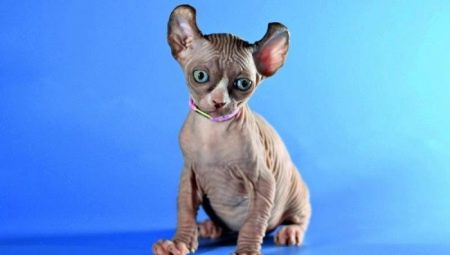Elf cats have appeared recently, but have already won the love of a huge number of people. Features of the breed - the lack of wool and the ears charmingly bent at the tips - give its representatives a special appeal for many breeders and amateurs. The description of the appearance of cats and kittens even sounds unusual, but in fact such a pet is quite comfortable in maintenance, and the rules for grooming and feeding are not more complicated for him than for an ordinary pet.
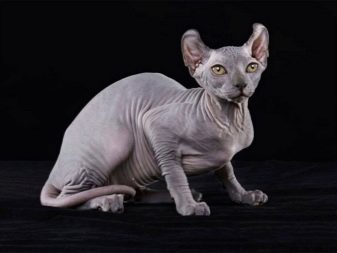
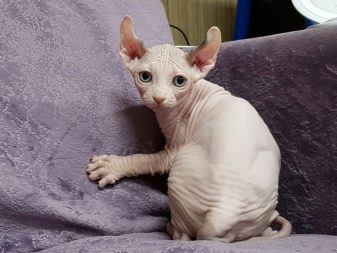
Origin history
Elves owe their birth to cats to two enthusiastic breeders from the United States. The Canadian Sphynxes were taken as the basis for the creation of the new breed of cats. Thanks to them, the animals received a body without a coat, and a graceful build. But the kittens owe American curls their second remarkable feature - the ears bending outward.
Such a combination of blood was not at all accidental. The thing is that one of the breeders started breeding after the death of a pet from a complex hereditary disease.
Sphinxes are initially not very resistant to the effects of infections and genetic diseases transmitted from generation to generation. And curls, on the contrary, are famous for longevity. The result of many years of painstaking work was the appearance in 2006 of a new breed. She was deprived of the traditional lack of hairless cats - poor health.
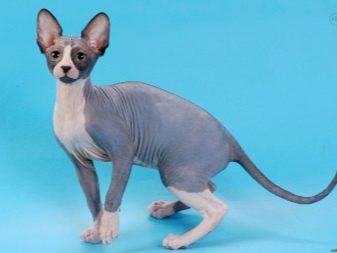
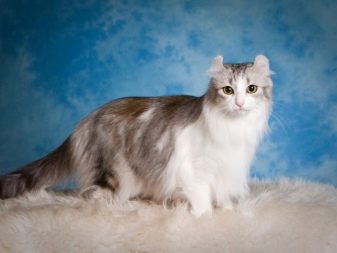
Elves - one of the youngest recognized breeds, it was recognized and included in the number of experimental in 2007, and since then it has been successfully bred not only in the USA.Having received the best features from her ancestors - charmingly curved ears, like in curls, and the lack of hair - it attracts the attention of felinologists and just animal lovers. But there are also difficulties. Recognition of elves as a breed is currently received only from one of the organizations, TICA, while in the world there are much more.
The number of nurseries and breeders is also small, which makes elves one of the five most expensive on the planet.
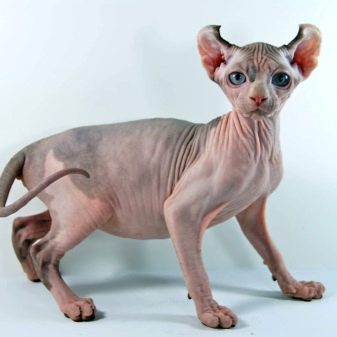

Description
The original appearance is exactly what her fans love this breed. Elves have a strong muscular body, with a pronounced convexity of the abdomen (the body of the animal is close to a pear in shape). The thoracic section is round, rather wide. The length of the tail relative to the body is quite large, its tip has a pointed shape. Adult animal weight up to 8 kg for males, up to 6 kg for females.
The limbs of elf cats are quite elegant, but muscular, supportive paw pads have a rounded shape. Compared with the sphinxes, we can say that this breed has a more harmonious physique. The elbows of the forepaws do not diverge to the sides, they are firmly pressed to the body, the legs themselves are longer than other hairless cats.

Elves are distinguished by a graceful line of the neck, it has a considerable length, expressive bending. The head is characterized by a wedge-shaped form, the muzzle is sharpened to the chin. The breed is distinguished by a pronounced cheekbone line, a straight, clearly defined nose with a slight difference.
The ears of the animal have a slope of 90-180 degrees, with a stable part of the cartilage by a third of the length of the entire organ of hearing. Elves are distinguished by pointed, bent back tips of the auricle. The ears themselves are large, have a wide base, in shape - pyramidal.
Elves are characterized by green, blue, yellow eyes. Their amygdala and expressiveness are particularly attractive to owners. Eyeballs are slightly convex, vibrissae and eyebrows are weakly expressed or absent altogether.
For cats of this breed, a phenomenon such as a different eye color is characteristic.
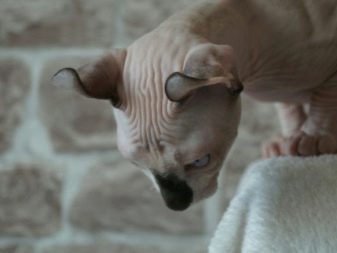
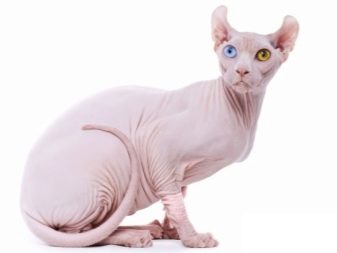
The skin of the animal is quite thick, almost bare, with a graininess, similar to suede. The surface of the body always remains warm. Folding, characteristic of elves, manifests itself most strongly on the muzzle, in the shoulder area. Short hairs are allowed outside the ear, on the nose (in the nose), on the tail and legs, genitals. As a rule, the presence of hair is manifested in kittens obtained in the first generation, when curls and sphinxes cross directly.
The skin color of the elves is not bright, usually light ash, beige, white or black.
It is permissible to have contrasting spots on any part of the body.

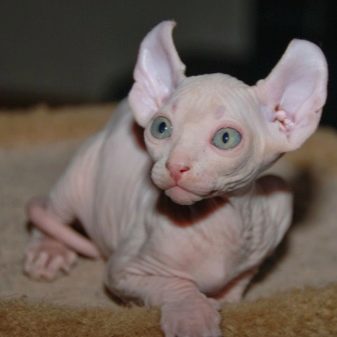
Among the breed shortcomings described in the standard developed by breeders, it is possible to note:
- tail curvature and deformation;
- excessively narrow head, lack of a hollow on the nose;
- too low folding in the head;
- overly massive or asthenic physique;
- copious amounts of hair in the area above the ankles;
- improper landing of the auricles;
- corrugated or rounded edge of the ear, its excessive bending.
When identifying these shortcomings, animals are not allowed for breeding.
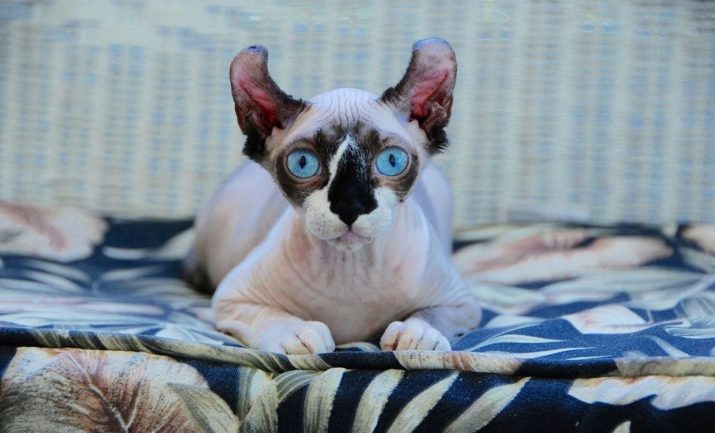
Character Features
Elf cats are classic companion animals, with all their advantages and disadvantages. These pets are quite active, always affectionate with their owners, friendly. The elf is perfect for acquiring as a family pet - it will be patient with children and will always be company during household chores. Cats love affection, walk well in their arms and try not to leave their owners for long without their company. At night, the elf can most often be seen in the owner’s bed, where he will feel absolutely happy.
The breed is characterized by curiosity, playfulness, observation.Kittens are quite actively mischievous, but with age, the behavior of the animal acquires a greater degree. Adult cats love height, try to arrange a bed for themselves as high as possible from the floor surface. Elves, calm in character, tend to be demonstrative in humans - with outsiders they can be capricious or arrange various tricks, thus attracting the attention of the owners.
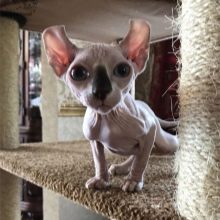
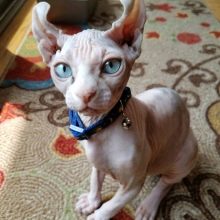

Cats of this breed do not create problems in the process of accustoming the animal to order. Elves are accurate in eating and in serving their natural needs. But if you show rudeness or cruelty towards the pet, he will surely find a way to pay for the grievances. When kept together with other cats and dogs, representatives of the breed behave in a friendly manner and make easy contact.
The presence of a companion makes their life easier if the owner is at home a little, and does not pay enough attention.
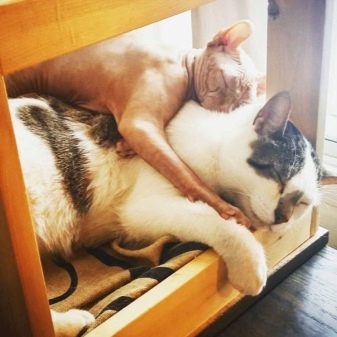
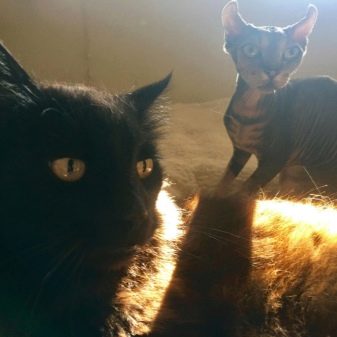
Conditions of detention
When choosing an elf breed kitten, or acquiring an adult animal, it is very important to provide him with decent conditions. A warm house or a berth is a prerequisite for creating a comfortable environment for a new pet. If you buy a sleeping basket, you should choose a model with high sides, it is recommended to install it away from drafts. The temperature in the room itself should also be comfortable - not lower than +20 degrees Celsius.
True heat lovers (they inherited this feature from the Sphinxes), elves are drawn to the sun and tend to sunbathe properly. If the animal has settled in a private house, you can arrange for him a "solarium" on a glazed veranda. In a city apartment, an ordinary window sill, devoid of flower pots and other dangerous items, will be enough. You can place a special mattress bed here - and the place for sunbathing for your pet will be ready for use.
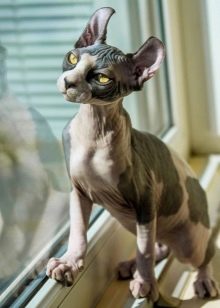
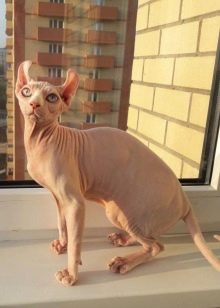
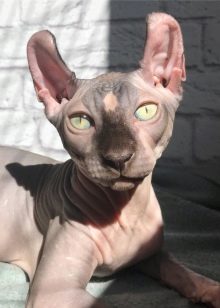
Do not leave a thermophilic pet unattended with the electric fireplace or heater turned on. In addition, during the hottest daytime hours, it is also better to prudently close the windows with curtains or blinds to prevent the cat from getting sunburn. If the animal spends a lot of time in the sun, pretty soon it will get a very tangible tan on the skin, which will go away for several months.
It is additionally possible to insulate a baby elf or an adult cat with the help of special clothes for animals. The breed is surprisingly easy to adapt to wearing comfortable wardrobe items, and feels quite at ease in them. As they grow older, cats can boast a very impressive wardrobe for all occasions.
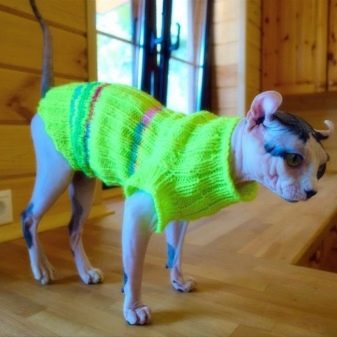
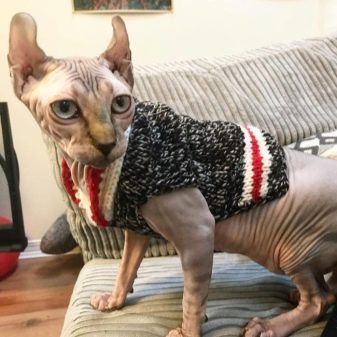
Resolving walking issues is a rather painful moment for pet owners and breeders. In the case of elf cats, there is no need to talk about freedom of movement.
But it is better to teach a pet to wear harness in advance, so he will feel calmer while traveling in the car, and will also be able to walk along the grass in dry and warm weather.
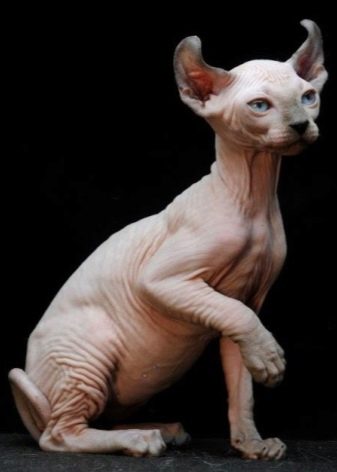

Hygiene issues
Since cats of the elf breed do not have a coat, their body needs regular hygiene procedures, which ordinary fluffy tetrapods can easily handle themselves. In particular, regularity is very important in skin care. Every day it is necessary to wipe it with a damp cloth, paying special attention to areas with folds - dust accumulates here, dead particles and epidermal flakes. If you accustom a cat to such care from a very young age, in the future it will be possible to avoid difficulties with the implementation of care as the pet grows older.
The bathing process of elves is subjected to about two times a month, when washing the skin is washed with a special tool with a washcloth or sponge, and then rinsed with warm clean water. It is extremely important to choose a shampoo that is suitable specifically for representatives of bare breeds.The composition of such funds contains substances that heal microcracks that eliminate skin irritation.
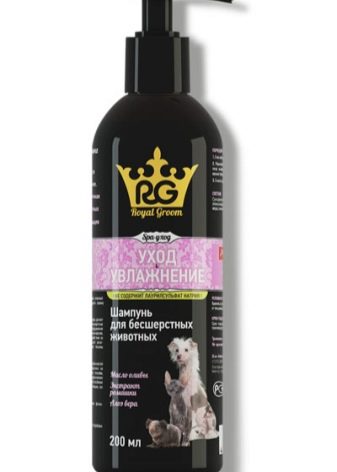
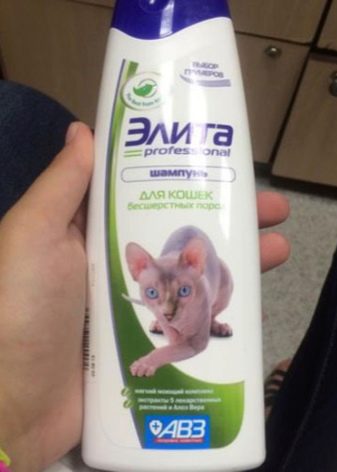
Another care step is ear cleaning. It allows you to control the health of the animal, timely eliminate all emerging problems. The large ears of elf cats need special attention. Weekly they are carefully treated inside with a special cotton swab lubricated with petroleum jelly or a specialized lotion. It is better to undergo a pet procedure with the support of a second person, because cats do not really like to clean their ears, and there is a risk of injuring the animal if you try to cope alone.
Cotton buds are best to choose children's or special for animals. Do not use self-made tourniquets and other home-made versions of cleaning sticks. They can get stuck inside the ear.
If any signs of inflammation are identified, contact your veterinarian. Anxiety should be ulcers, the appearance of an unpleasant odor or secretions.
Black dots inside the ear also require medical attention.
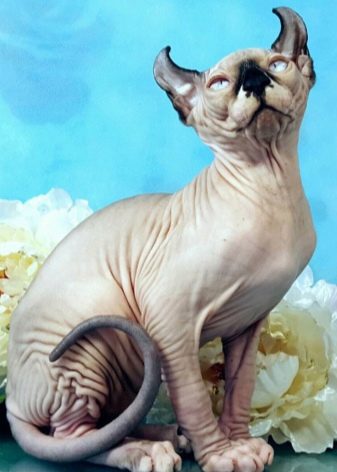
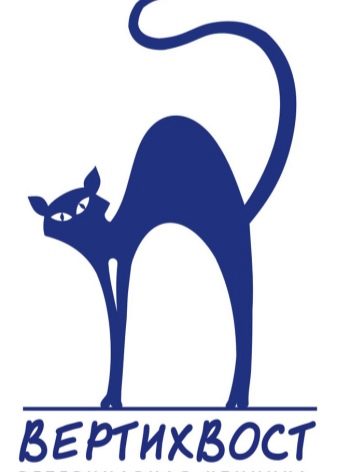
Claw care
Another unpleasant, but necessary for the pet procedure - clipping. Excess stratum corneum is cut off with nippers. The length of the removed tip should not exceed 2 mm, blood vessels can be located higher. If blood appears on the slice, thoroughly treat them with an antiseptic solution.
If scratches become a problem, you can use special devices - anti-scratches, which are silicone pads, put on claws and fixed with special glue. They do not allow the animal to injure themselves or others, they can eliminate the damage to interior items by a cat, not accustomed to the clawfish.
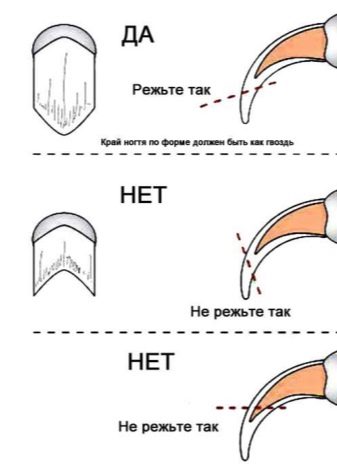

Eye hygiene
For elves with bulging eyeballs, eye hygiene should be at the highest level. They are treated twice a day, in the mornings and evenings, with a cotton pad soaked in lotion. Warm tea leaves or a decoction of chamomile flowers are also suitable. The normal color of the eye discharge is light. The appearance of brown traces or bloody, purulent drops is an occasion to contact a veterinarian.
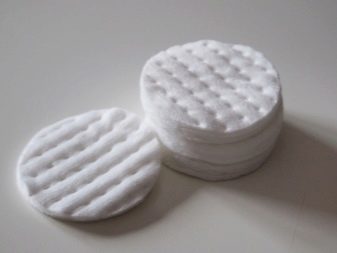
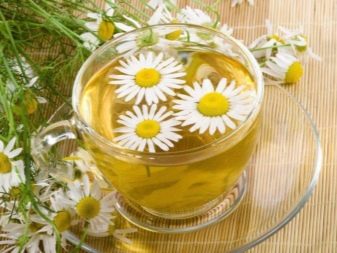
Dental care
Like every predator, the teeth of felines are one of the most important indicators of health. They are regularly examined and cleaned using specialized means - veterinary paste, a compact brush (the option for infants is made of silicone). If the animal receives little solid food, tartar may form on the enamel.
To prevent the development of gum inflammation, it is worthwhile to regularly conduct professional cleaning in the doctor’s office.
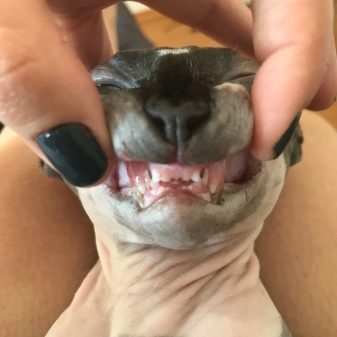
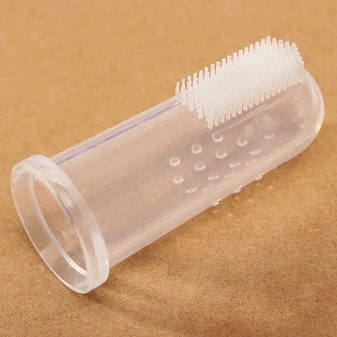
Feeding
Consider the general principles of feeding elves.
- The frequency of feedings for kittens should be up to 5 times a day. Adult animals eat no more than 2-3 times a day.
- Servings should be small. Elves have a habit of greedily absorbing food, neglecting to chew it, which further leads to digestive problems. Owners should remember that a cat of this breed asks for an additive, even if it is full.
- The standard volume of servings per day when feeding with natural nutrition is 250 ml. And you can also calculate based on the weight of the animal - 40 g of food per 1 kg of body weight.
- When introducing new products to the diet, do not rush.
At the slightest manifestation of an allergy, feeding is stopped.
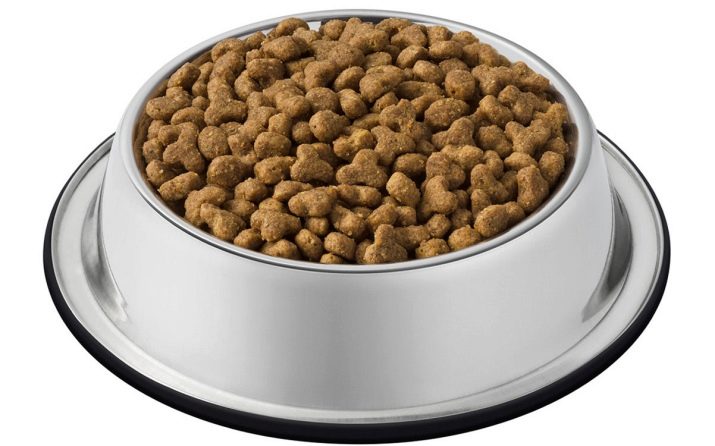
Finished feed
The easiest solution to provide elf cats with a complete diet is to switch to dry ready-made food, pastes and jelly in spiders. Among the options suitable for hairless animals are:
- Purina pro plan delicate - Superpremium diet based on turkey meat, rice, corn, natural oils;
- ACANA Grasslands for Cats - holivik feed based on duck meat, lamb liver, lamb, lentils;
- Royal Canin Sphynx Adult - takes into account the needs of breeds of cats, deprived of hair, but can cause allergies.
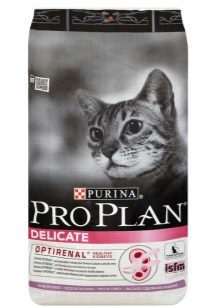

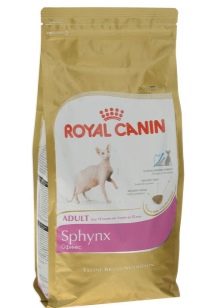
Natural feeding
When compiling a natural diet for an elf cat, it is worth focusing on your own pet preferences and the recommendations of veterinarians. The composition of the feed should be at least 60% of the protein components of animal origin. This includes lean meat - chicken, turkey, veal and beef, cottage cheese and low fat kefir. About 10% of the diet is fats and 30% is carbohydrates.
Of vegetables in the diet should be zucchini, carrots, cauliflower, be sure to add cereals - from lentils to rice and oatmeal. A special pot of cat grass will help replenish the supply of fiber. With it, the pet will receive fresh vitamins.

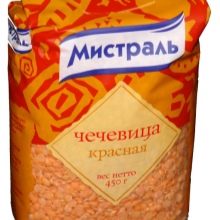
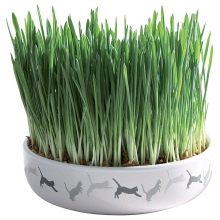
Exclude from the diet of the cat breed elf should be all smoked, pickled, sweet and fatty foods. It is not recommended to give pork, legumes.
By choosing a balanced diet for elves, you can provide them with a full supply of energy and prevent the development of obesity, which is dangerous for animals.
Health
Potential owners of elf cats often show quite reasonable concern about the possible manifestation of genetic diseases characteristic of all breeding breeds. But at the moment there is no information about the presence of such problems. Moreover, it is safe to say that with proper care, elves can live up to 15-18 years.
Representatives of the new breed have every chance to be long-livers.
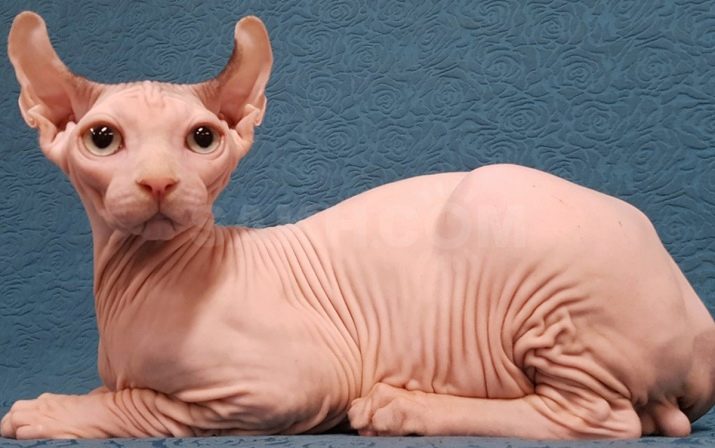
However, it does not do without health problems. Like representatives of other hairless breeds, elves have sensitive skin to the effects of various irritants. Dermatitis, rashes, peeling - these are just a small part of what the owners of animals face. Consider the causes of skin problems that are most common in elf cats.
- Hormonal imbalance. In animals, it manifests itself quite clearly and can cause acne.
- Food allergy. If food does not suit the pet, he accidentally tried a forbidden treat, you can expect a rash with a high degree of probability. Often an allergy manifests itself in seafood.
- Poor hygiene. Cat skin needs regular cleansing. With increased separation of fat or dry dermis, hygiene will have to be given special attention.
- Long exposure to the sun. Sunburn for cats is a serious danger, can cause redness and flaking of the skin.
- In young cats, cats intense periods of increased hormonal levels can occur, occurring with almost the same symptoms as puberty in humans. Skin rashes and increased fat separation are a consequence of these problems.
- Improper selection of food. In elves, it leads to the formation of a brown coating on the surface of the skin. When it appears, it is worth consulting with a veterinarian about possible changes in nutrition.
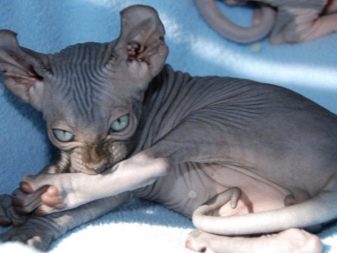
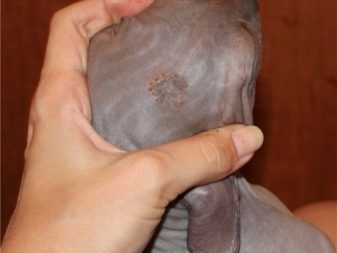
We should not forget that the absence of a coat leads to an increased susceptibility of cats to colds. Significant temperature differences, drafts, prolonged exposure to cold elves are contraindicated.
More about elf cats in the next video.
